by Lisa Cooke | Jun 20, 2016 | 01 What's New, Apps, Book Club, Mobile, Travel |
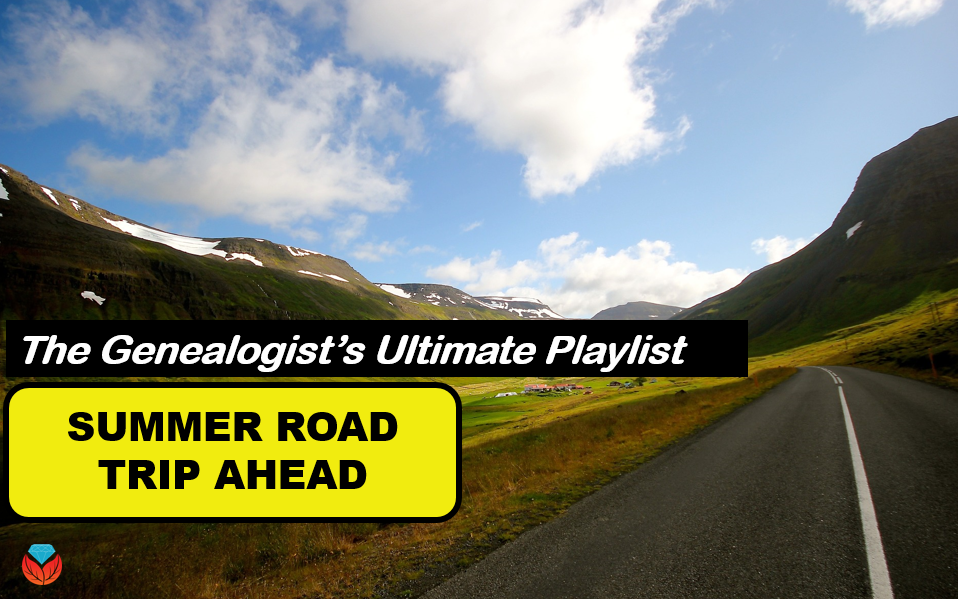 Are you going on a road trip this summer? Do you have a genealogy playlist ready? Here are some favorite resources for creating the ultimate genealogy playlist for the open road.
Are you going on a road trip this summer? Do you have a genealogy playlist ready? Here are some favorite resources for creating the ultimate genealogy playlist for the open road.
The Apps
Whether you have an Android, Apple, or Windows device, plan your own audio genealogy playlist for your next road trip. Here are some of our top picks:
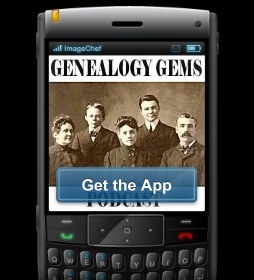 1. The Genealogy Gems Podcast App allows you to listen to our regular podcasts with tips and tricks for genealogy and includes extra bonus content you won’t find anywhere else. By downloading the podcast before you hit the road, you won’t have to worry about using your data or hoping you have enough bars! And don’t miss the Bonus content available in many of the episodes. It’s a nice perk of our app.
1. The Genealogy Gems Podcast App allows you to listen to our regular podcasts with tips and tricks for genealogy and includes extra bonus content you won’t find anywhere else. By downloading the podcast before you hit the road, you won’t have to worry about using your data or hoping you have enough bars! And don’t miss the Bonus content available in many of the episodes. It’s a nice perk of our app.
2. AudioBooks from Audible. Audio books are a great idea for any road trip. For the highest quality reading voice, consider downloading a free app like AudioBooks. With 180,000 available titles, you will be sure to find something you like. AudioBooks offers a free 30-day trial and includes one free audio book. After the trial month, you can download a new book each month for $14.95, or purchase any book you want for the listed price.
3. Kindle Audio App is also free and easy to navigate. Once you have downloaded the app to your device, you can sign-in with your Amazon account to purchase the books you want. You can even sample books before you buy! Kindle Audio App allows you to experience “immersion” reading by allowing reading and listening simultaneously. Or, turn your Kindle e-book into an audiobook by having your iPhone read it to you: click here to learn how.
Genealogy Playlist Book Recommendations
Would you like some great summer reading options? These Genealogy Gems Book Club titles are some of our picks for listening on the road, on the beach, or wherever the sun takes you.
The Summer Before the War by Helen Simonson is a fun read about Beatrice Nash who lands in East Sussex, where locals aren’t exactly thrilled to meet her. She spends the summer fighting for her job, meeting a local cast of engaging, eccentric characters (both gentry and gypsy,) and trying not to fall for handsome Hugh. Then, the Great War breaks out. Listen to a free excerpt of an interview with the author in The Genealogy Gems Podcast episode 192.
Orchard House: How a Neglected Garden Taught One Family to Grow by Tara Austin Weaver, author of the internationally-acclaimed blog Tea & Cookies. This memoir is one part food, one part gardening, and two parts family drama, liberally seasoned with humor and introspection. Tara’s mother moves to Seattle to be near her. Together, they purchase a home with a wild garden. The challenge of reinvigorating the garden is nothing compared to the challenge of renewing their troubled relationship. It’s an honest (and mouthwatering) story of planting, cultivating, and harvesting the fruits of family and garden. The Genealogy Gems Premium website members can access the full interview in our premium podcast episode 133 or click here to hear a free excerpt.
by Tara Austin Weaver, author of the internationally-acclaimed blog Tea & Cookies. This memoir is one part food, one part gardening, and two parts family drama, liberally seasoned with humor and introspection. Tara’s mother moves to Seattle to be near her. Together, they purchase a home with a wild garden. The challenge of reinvigorating the garden is nothing compared to the challenge of renewing their troubled relationship. It’s an honest (and mouthwatering) story of planting, cultivating, and harvesting the fruits of family and garden. The Genealogy Gems Premium website members can access the full interview in our premium podcast episode 133 or click here to hear a free excerpt.
The Lost Ancestor (The Forensic Genealogist) by Nathan Dylan Goodwin. This is the most recent book in a “genealogical crime mystery” series by the British author. Forensic genealogist Morton Farrier is hired to find out what happened to his client’s great-aunt Mary, who disappeared without a trace a century ago while working as a maid at a grand English estate. The author joined us on the June podcasts if you would like to take a listen. Genealogy Gems Premium members can hear the entire interview here. Other titles in the series: Hiding the Past and The Orange Lilies: A Morton Farrier Novella.
Orphan Train , by Christina Baker Kline, spent five weeks at the #1 spot on the New York Times Bestselling list and top of The Bestsellers List in Canada. The novel intertwines the stories of Vivian and Molly. Vivian is an Irish girl who lost her family in New York City and was forced to ride the ‘orphan train’ to find a new home. Decades later, the aged Vivian meets a teenager, Molly, who is struggling to find identity and happiness in the modern foster care system. Click here to catch highlights of our interview with Christina Baker Kline on the The Genealogy Gems Podcast. Genealogy Gems Premium members can click here to listen to the full-length interview.
, by Christina Baker Kline, spent five weeks at the #1 spot on the New York Times Bestselling list and top of The Bestsellers List in Canada. The novel intertwines the stories of Vivian and Molly. Vivian is an Irish girl who lost her family in New York City and was forced to ride the ‘orphan train’ to find a new home. Decades later, the aged Vivian meets a teenager, Molly, who is struggling to find identity and happiness in the modern foster care system. Click here to catch highlights of our interview with Christina Baker Kline on the The Genealogy Gems Podcast. Genealogy Gems Premium members can click here to listen to the full-length interview.
Find more books we think are perfect for family history lovers at The Genealogy Gems Book Club.
by Lisa Cooke | May 13, 2017 | 01 What's New, FamilySearch, Research Skills |
I have thoroughly enjoyed having Amie Tennant as a blogger for the past year. In her final blog post for Genealogy Gems she takes us on a tour of her home state’s digital records. Then she will be turning all of her attentions to her own genealogical certification. Thank you Amie for all of your helpful and thoroughly enjoyable posts! – Lisa Louise Cooke
Ohio genealogy research goes digital. You can now virtually walk into any courthouse in Ohio with the click of the mouse. Check out the amazing browse-only databases at FamilySearch for Ohio and other states, and take your family history research to the next level.
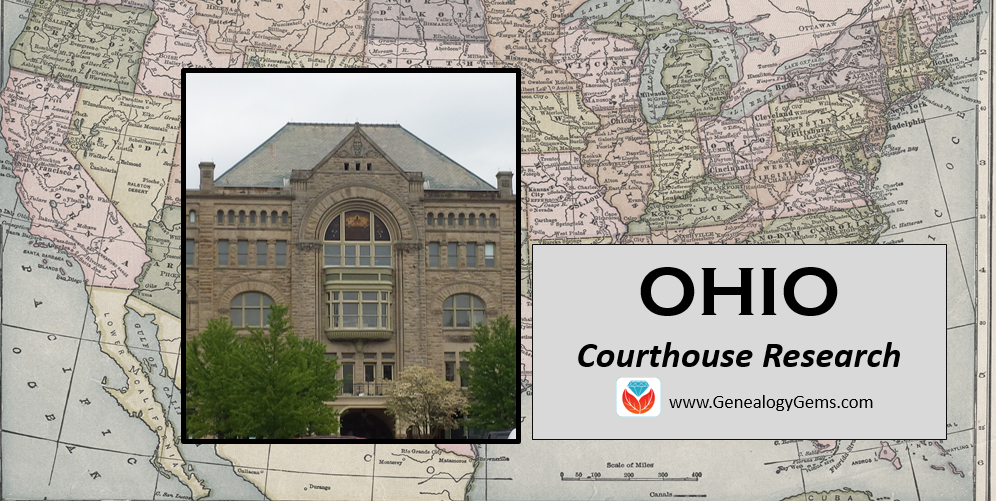
I use FamilySearch.org to search courthouse record books all the time. In particular, the Ohio Probate Records, 1789-1996 now have nearly 7 million digital images of county record books such as wills, estate files, guardianship records, naturalization records, minutes, bonds, and settlements. In fact, many other states have their court record books online at FamilySearch, too. So, why haven’t you noticed before?
Browse-only Databases vs. Indexed Databases
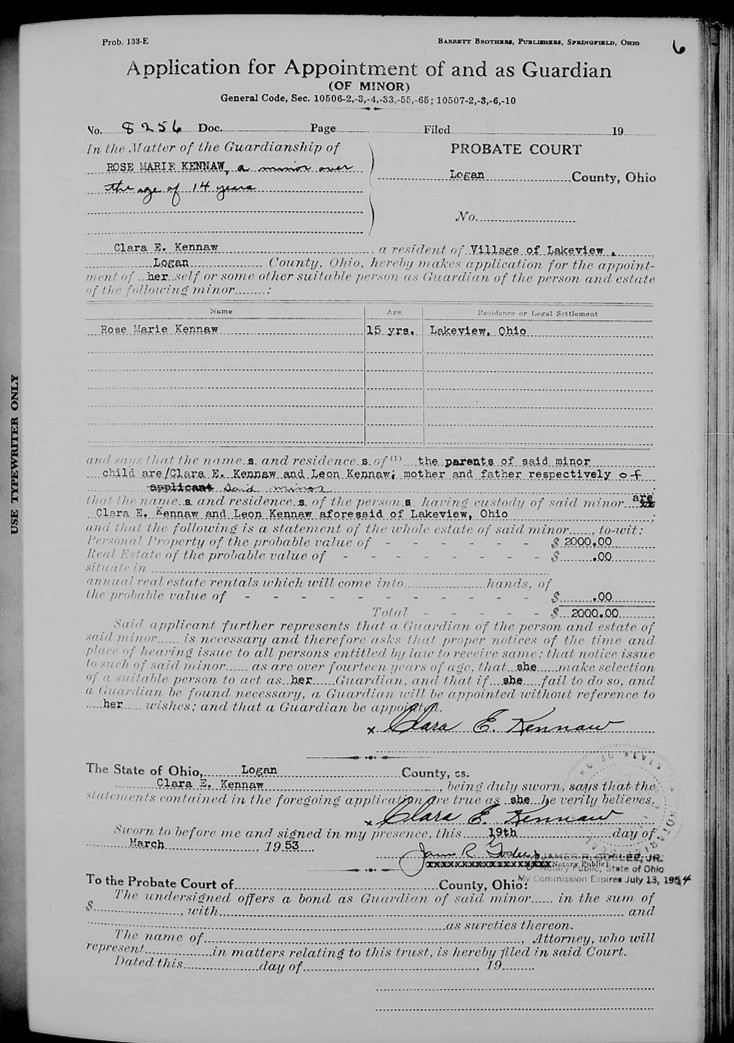 You may have read our previous post on step-by-step instructions to using browse-only databases at FamilySearch. If you didn’t, you should know that when you are searching for records at FamilySearch using the traditional search fields, you are only searching for records that have been indexed. In other words, there may be thousands of records you need on the site, but you won’t find them. They have not been indexed by a searchable name, place, or date. Instead, you need to go in the virtual “back door.”
You may have read our previous post on step-by-step instructions to using browse-only databases at FamilySearch. If you didn’t, you should know that when you are searching for records at FamilySearch using the traditional search fields, you are only searching for records that have been indexed. In other words, there may be thousands of records you need on the site, but you won’t find them. They have not been indexed by a searchable name, place, or date. Instead, you need to go in the virtual “back door.”
Step 1: First, go to FamilySearch and sign in. Next, click Search at the top right. Now you will see a map of the world. Click on the desired location. I have chosen the U.S., but you can choose any country you are interested in.
Step 2: Once you choose your desired country or continent, a pop-up list will be available and allow you to choose the state (or country) you wish to search in. In this case, a list of the U.S. states appears and I clicked on Ohio.

Step 3: The system will direct you to a new page. You will first see the Ohio Indexed Historical Records. These are the records and collections that have been indexed and are searchable by name, date, and place. Though these are great, they are not the record collections I want to share with you today.
Instead, scroll down until you see the heading Ohio Image Only Historical Records. You will notice several databases such as cemetery records, church records, naturalization records, etc. All of these are browseable. That means you will use them like you would microfilm.
Step 4: I want to bring your attention to a specific record collection, so scroll down even further until you see Ohio Probate Records, 1789-1996. Click it.
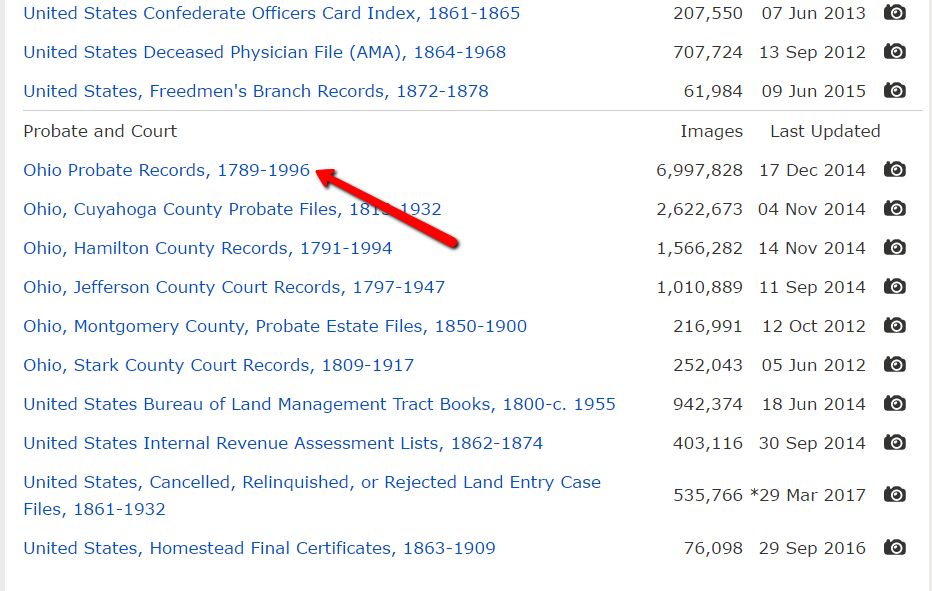
At the next screen, you will see you can browse the 6,997,828 Ohio probate records and you are probably thinking, “What!? I can’t possibly browse through nearly 7 million records!” But, you can, so go ahead and click it!
Step 5: At the new screen, you will see everything is broken up into counties. Click on the county you are interested in researching. You will next see a list of possible record books available for that county. Each county will vary, so where you may find guardianship records available in one county, you might not find them in another.
Ohio Genealogy Research at the Courthouse
As a refresher, courthouse research is often imperative to thorough genealogy research. Here is a helpful chart of the type of information you may find in these types of court records. Be sure to remember: records and the amount of information they contain change over time.
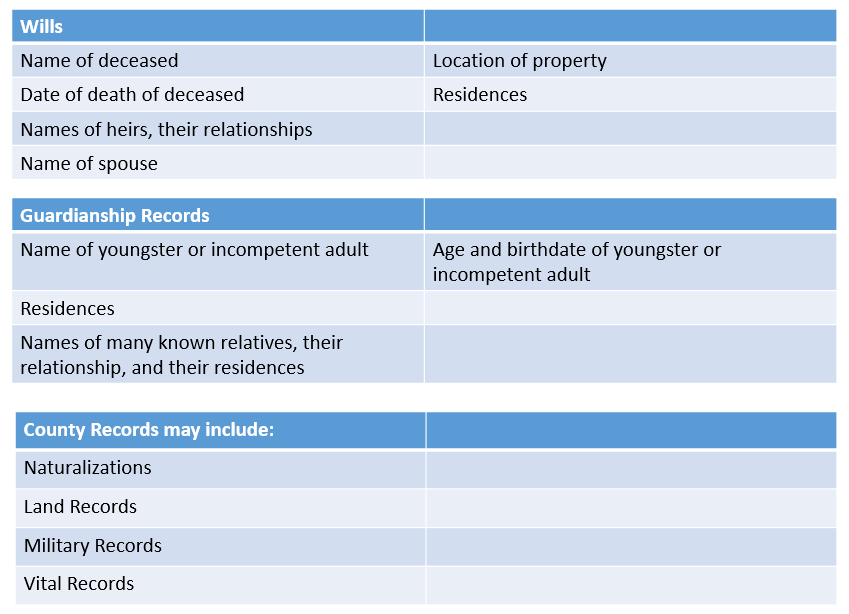
More on Courthouse Research Techniques
Are you looking to understand the value of courthouse research and how to use those records to overcome brick walls in your family tree? Read 4 Ways to Power Up Your Courthouse Research Skills from our own Sunny Morton.
by Lisa Cooke | Jun 12, 2019 | 01 What's New, Genealogy Gems Podcast |
with Lisa Louise Cooke
June 2019
Listen now, click player below:
Download the episode (mp3)
In this episode:
- The story of Roy Thran
- Writing your story with author Karen Dustman
- Lisa’s adventures in England
Please take our quick PODCAST SURVEY which will take less than 1 minute. Thank you!
GEM: The Story of Roy Thran
Have you thought about telling the story of your personal history? Most of us have at some point, but it can seem easier to research the stories of our ancestors than to weave together our own. I’ve spoken to a lot of genealogists through the years and I often hear comments like “My story isn’t all that interesting or important.” But nothing could be farther from the truth.
When we don’t tell our own story, we not only take a big risk that the memory of our life will be lost down the generations, but we rob our family and our community of an important piece of their history.
Karen Dustman is the author of the book Writing a Memoir, from Stuck to Finished! She’s been helping folks capture and record their stories for several years in her community in the Sierra Nevada, which spans Central and Eastern California into Western Nevada. She’s known widely there as a local historian, writing on her blog and in the local newspaper about the history of the area.

 Writing a Memoir from Stuck to Finished! by Karen Dustman
Writing a Memoir from Stuck to Finished! by Karen Dustman
It was actually Karen’s story of the history an old house in the Carson Valley that shed light on the fact that one of its inhabitants was at risk of being forgotten. And no one wants to be forgotten.
In this episode, we travel back to 1925 to a sparsely populated ranching community to hear the story of 10-year-old Roy Thran. We’ll hear about his life and death, and how his story tentatively made its way through the generations of the family in one simple box all the way to the hands of his great grand-niece Krista Jenkins.
It was Krista who connected the all-important dots, eventually culminating in a museum exhibit that is now telling an important part of the Carson Valley history and touching the lives of its residents. In addition to Karen Dustman, you’ll hear from Krista Jenkins herself and Carson Valley Museum trustee Frank Dressel. My hope is that Roy’s story will transform your thinking about sharing your own story.
PART ONE: The Missing Boy
Last Fall, Krista Jenkins stumbled upon an article featuring a house she knew well. It was the home her grandmother grew up in, a beautiful white two-story home nestled on a ranch in Gardnerville, about an hour south of her home in Reno, Nevada.
The blog post called The Tale of the Thran House – and an Old Trunk was written by Karen Dustman, a local area historian and author.
It featured the story of Dick and Marie Thran, German immigrants who came to the Carson Valley in the late 19th century, and the four children they raised there, including Krista’s grandmother, Marie.
What jumps out at many readers about the blog post is the photograph of the beautifully restored German steamer trunk complete with heavy black ornate hardware, very likely the trunk that Krista’s great-grandmother had traveled with from the old country. The trunk had been discovered by the current owners in an old shed on the property, dirty and filled with auto parts.
But for Krista Jenkins, what jumped out was what was missing from the story: a little boy named Roy, the 5th and surviving Thran child.
Author Karen Dustman explains how the two women connected.
Karen: “I had mentioned the names of the four surviving children of this couple who lived in this house. But this relative reached out to me and said, ‘Did you know that there was this other child that they had named Roy?’
I was really curious, so we got in touch. She told me not only about Roy and his life, but that she had this amazing box. The family had kept this little boy’s possessions all these years after he died, and she had become the custodian of this box. So, she asked if I wanted to see it and of course I wanted to see it!”
The box contained the young Roy Thran’s childhood, a time capsule of sorts filled with the books, toys, and trinkets representing his interests and activities. In a sense, it was a boy in a box.

PART TWO: The Birth of Roy Thran
Roy Thran was born Wednesday, June 10, 1925.
The folks in the Carsen Valley of Nevada were flocking to the new Tom Mix movie North of Hudson Bay playing at the Rex theater in town.

And everyone was looking forward to the big Carsen Valley Day Dance to be held that Saturday night at the CVIC Hall in Minden. Everyone, that is, except Anna Sophia Marie Thran, simply known as Marie. (Photo below)

A native of Hannover, Germany, Marie was in the last weeks of her pregnancy and was happy to deliver before the hot summer weather was in full swing.
She had reason to be apprehensive about this birth for several reasons. A 48-year-old mother of four, she was on borrowed maternity time with this late arrival. Her last surviving child was born in 1901 and since then she had suffered the loss of three more children, including little Katie Frieda who lived just three months.
Marie’s husband Diedrich Herman Thran (photo below), known around town as Dick, was 14 years her senior. Also a Hannover native, according to the 1900 census, Dick had immigrated in 1881 and became a naturalized citizen.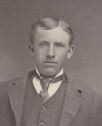
Dick saved the money he earned working for ranchers in the area and at the age of 30 returned to Germany to find himself a wife.
In 1895 he returned with seven other Germans and most importantly, the beautiful Anna Sophia Marie Dieckhoff, his fiancé, on his arm. Within the month they exchanged vows at the home of Dietrich’s brother Herman. That was back on another lovely June day, the 29th of June 1895 on which the hard-working Dick presented her with a lavish wedding gift: a beautiful horse and buggy.
Lying there in her bed in the enchanting white two-story home on Dressler Lane fashioned after the grand homes of their native land, Marie gave birth to their son in 1925.
Author and local Carsen Valley historian Karen Dustman: “Roy’s birth must have been quite a surprise for Marie, especially after losing three children in the intervening years. I’m guessing it was a very happy surprise this late in life, and he was certainly welcomed into the family. They had a christening ceremony for him at the local Lutheran church on June 21, 1925, so eleven days after he was born.”
Thran descendant Krista Jenkins: “Because Roy was a late baby, my great-grandmother coveted this little guy. It was the joy of their life at this point.”
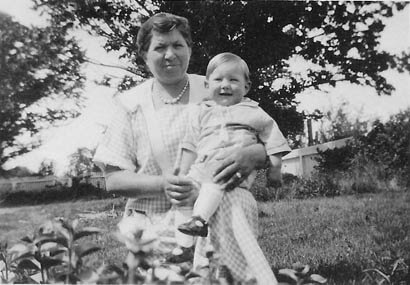
Roy’s childhood
Roy grew up like many sons in the Carsen Valley at that time, likely carrying some responsibilities around the ranch, but also living a fairly free-range life. Historian Karen Dustman explains:
“Roy was born and grew up in the late 1920s and early 1930s, so he would have been part of a wonderful rural farming community here. And of course, he would have lived in the beautiful Thran house on his parents’ dairy ranch. And both of his parents were German as we talked about from the old country, so I imagine they were a little bit strict. And I would imagine he would have had chores to do on the ranch. But as the baby of the family, I’m picturing him doing less than the other kids in terms of chores. He went to the elementary school in Minden nearby where he would have gotten to know all the other ranchers’ kids.”
In the Thran family a few handed-down stories confirm this.
Krista: “It was your typical ranching family in the early 1900s where everybody pitched in and worked. And little Roy came along, and he was handed down the little toys that somebody else had in the family. And from descriptions that we’ve been told as far as my generation, is that he was just a happy-go-lucky little kid, liked to pitch in and work, and just very kind of a jolly good little guy.
He got relatively good grades in school and was conscientious, and just kind of the love of my great-grandmother and grandfather’s life at that point.”
But it’s really the box of Roy’s possessions that tell us a more complete story of his childhood.
“He had those classic metal toy trucks to play with and watercolor paints. We know that he played Tiddledy Winks with his friends, and marbles. One of the other things that he had as an item in his box was a homemade sling shot that somebody had carved out of a fork branch, so I can picture him out there trying to hit things with the sling shot.
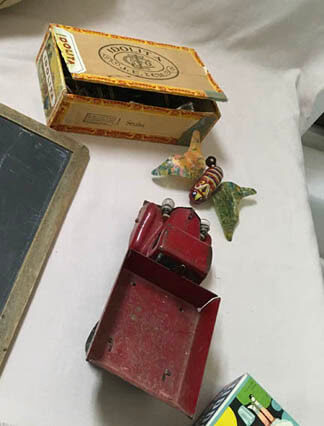
We know that he played baseball, and someone had hand-carved a wooden baseball bat for him, if you can imagine. It wasn’t even perfectly round. It had these flat sides on the baseball bat so you can imagine it must have been really hard to hit the ball in a straight line.
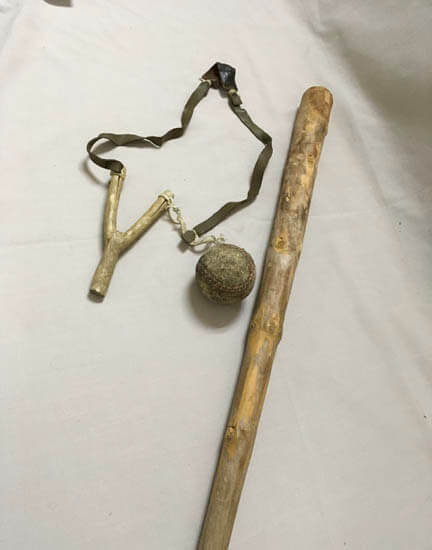
And then one of his sweetest possessions that I really like is he had a stuffed toy rabbit that he must have carried around as a toddler. And it looks like one of those homemade things. Women back then used to buy a printed pattern that was on cotton cloth, and they’d cut it out and stuff it. The moms would sew around the edges and put stuffing inside. And this was a really stained and well-worn toy, so I just picture him carrying around this little stuffed rabbit as a child.”
Roy was also enamored with the great aviators of the day. He joined the Jimmy Allen Flying Club for kids, which came with an official acceptance letter, a bronze pin featuring “flying cadet” wings, and a silver pilot’s bracelet.

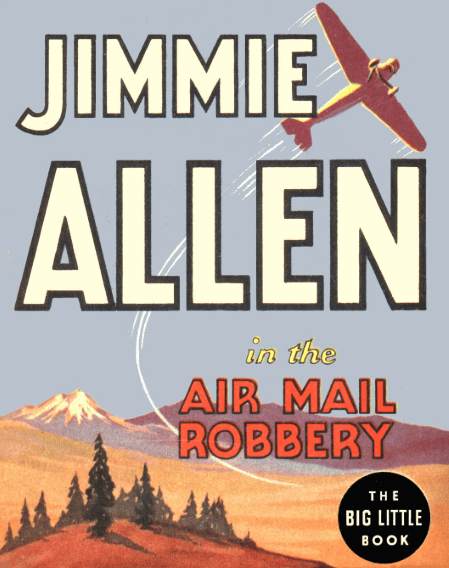
In the box was also a treasured pint-sized version of the aviator cap that Charles Lindbergh wore on his history-making solo flight across the Atlantic Ocean in 1927.
The Premonition
One day in 1935, ten-year-old Roy entered the kitchen where his mother was working. But this was no ordinary day.
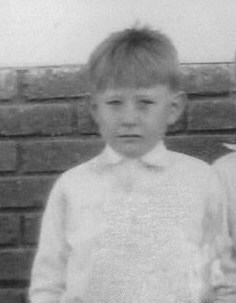
Krista: “Well, the story in the family is that my great grandmother was in the kitchen with my grandmother (her daughter), and little Roy walked in and my great-grandmother kind of shrieked a little bit, and written across his forehead was something in the order of ‘I won’t be here much longer.’”
Sometime after this unusual event, early on the afternoon of August 6, 1935 Roy headed over to his friend Henry Cordes’ home to pick up some Sunday school papers that he had left in the car. While visiting, Roy and Henry’s older brother, twelve-year-old Roy Cordes decided to head out on horseback for a ride. Around 4:00 they stopped to eat lunch and then, even though by all accounts from the family Roy hated water, they decided to make their way to the dam on the Carson River to go swimming.
According to Roy Cordes’s account of the event to the local newspaper, “After undressing Roy Cordes admonished his chum to be careful because the water near the dam was deep. The words were hardly out of his mouth when his chum stepped into deep water and disappeared. Neither of the boys could swim, but young Cordes made a heroic attempt to save his companion and came within an ace of losing his own life as he frantically grabbed for his chum.”

Realizing that he was helpless to save his friend, young Cordes hurriedly dressed, mounted his horse and rode at top speed into the home of his father and notified him of the tragic event. Mr. Cordes drove to the Thran ranch, telling the parents of the boy what had happened.
Krista: “Subsequently my Uncle, which would be Roy’s brother Carl, jumped in and he’s the one who found Roy’s body. And they pulled it out on the bank and tried CPR for quite a while, and it wasn’t working. So, he passed away there. But Roy’s brother Carl is the one who drug him out.”
(Image below: Roy Thran’s death certificate)
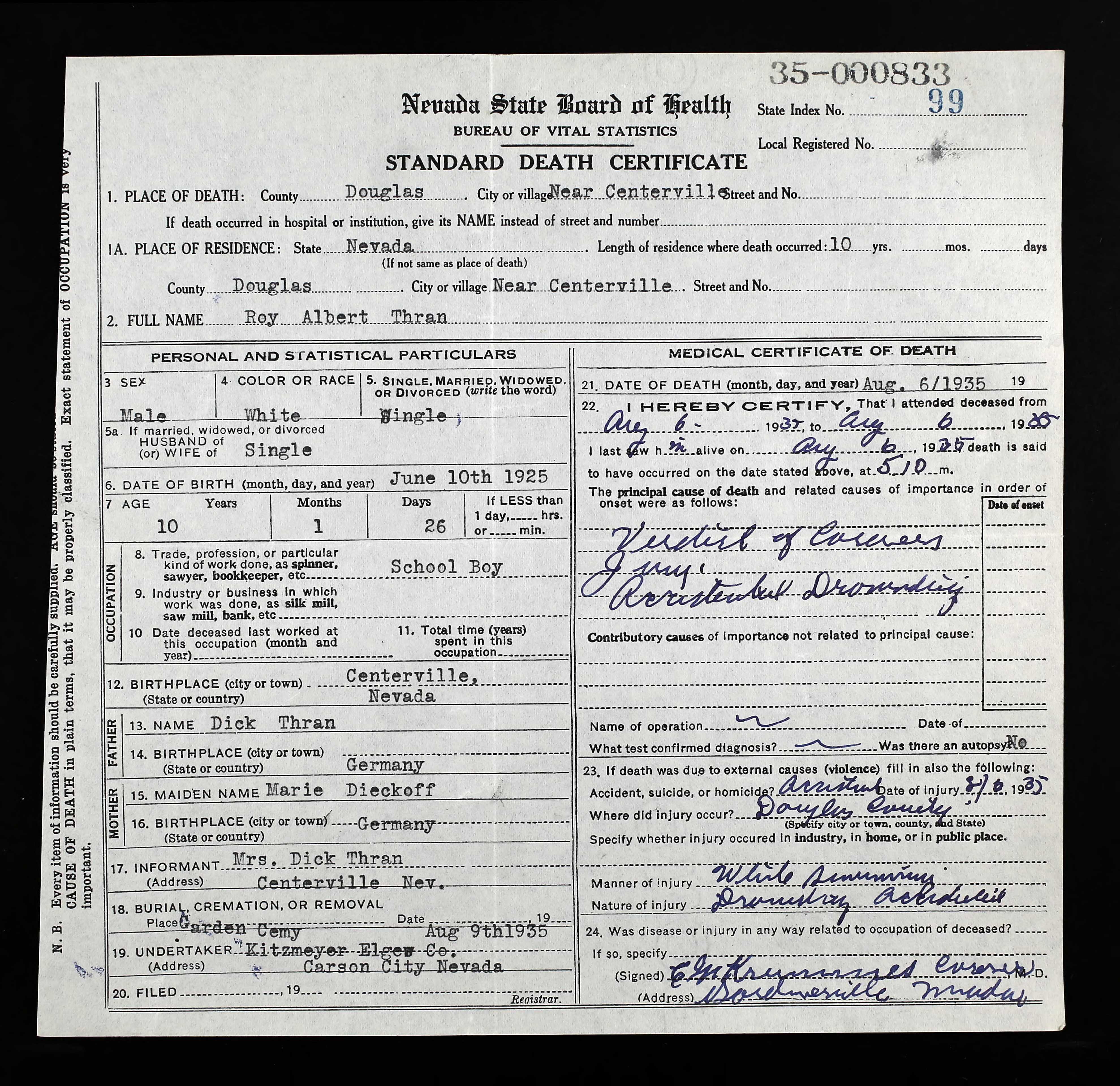
PART THREE: A Life in a Box
After Roy’s tragic death, Roy’s mother Marie carefully collected not only his prized possessions like the aviator’s cap, but also some of the last things he would have personally used like his school slate and a small collection of books. They were placed in a box, and by all family accounts, Roy wasn’t spoken of again. That is, until years and generations later.
Krista: “When my Grandmother Marie’s brother died, who was Carl, who was also the brother of Roy, he died in the early 80s I believe, my grandmother was in the family house, and they were cleaning out the belongings in this house. And that was where she was raised, and of course Carl was also, and Roy. (Photo: Roy’s sister and Krista’s grandmother Marie Thran Cordes)
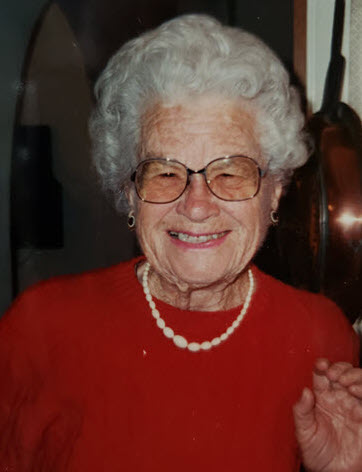
In the back portion of my great-grandmother’s closet was this box. My mom was there along with my aunt. And my grandmother came out of this closet area, and we don’t know why, gave this box to my mother with the instructions ‘make sure Krista gets this box.’ And so, they went on about their business. My mom, whenever we got together shortly after that, my mom said, ‘Oh, I have something for you from Grandma.’ So, it was this box, and we started going through it. And at that time, I didn’t know that little Roy had ever existed.”
In such a short period of time, one leaf on the family tree had grown dangerously close to being forgotten. And Krista learned very quickly how important it was to gather the stories of her elders.
Krista: “We started going through all of his belongings, and we kind of pieced together this story, and that’s when we kind of started figuring out ‘Oh my God!’ My mom remembered because she was told the story as a little girl growing up that these were Roy’s belongings.
You know, as time went on, the funny thing, and maybe this is what happened in these prior generations, is nobody really talked about Roy. In fact, I just read an article that my grandmother was interviewed in a long time ago, and she spoke of growing up and working on the ranch and such, and she didn’t even mention Roy. So it’s just maybe that generation was, you know, ‘He passed away,’ and they just parked him. Or again, speculation, maybe that was such a traumatic event for the family that they just decided to park it. That could be a generational thing that long ago. But it’s not like, you know, ‘Talk about Roy!’ It was just never really brought up.”
(Click here to read the article about Marie Thran Cordes.)
Over the years Krista kept the box and gathered the remaining family stories about Roy, really restoring him to the family tree. So, on the day that she came across Karen Dustman’s article about the Thran house, she seized the opportunity to restore him to the community’s history.
Karen: “She was wanting to know if I’d be willing to write a story about Roy and his box. And also, whether our local museum would be interested in maybe doing an exhibit of his things. So, we arranged to meet up at the museum with the museum curator, and thankfully Gail is wonderful. She was as excited and thrilled as I was about the box. And I said I would of course love to do a follow up story about Roy and his box. Gail welcomed the idea of an exhibit at the museum and made the arrangements and space for it to happen.”
Taking items on loan rather than as a donation was a rare occurrence for the Carson Valley Museum. But Museum Curator Gail Allen felt it was worth a closer look, and Douglas County Historical Society Trustee Frank Dressel whole-heartedly agreed.
Frank Dressel: “Krista brought the box in and they kind of analyzed the different things, the different artifacts of Roy’s, as far as with his childhood, the stuff that was in the box that they found in the attic. It’s a local story. It’s a great story. The box has all kinds of treasures as far as this life of Roy Thran.”
Krista: “And as I started bringing stuff out of this box, everybody was enamored. They were just like “Oh, my God!” And it just sort of fell into place.”
Frank: “And they weren’t ready to donate it to the museum. And the big thing about the museum is that we don’t like to take things on loan because of the responsibility and everything else. But with this being a local exhibit, what we decided to do was to have it on exhibit at the museum for a year.”
Karen: “Krista and her aunt Lois Thran worked together to assemble the exhibit and physically put it in place. There was also a curator who was really, really helpful and she involved an exhibit’s coordinator to help get the display cases arranged and do what he could. But really it was the two family members who put the display together and did a beautiful job. They have two tall glass cases devoted just to his exhibit, which is really a tremendous amount of space. And it’s this little snapshot in time of just amazing things. The people who have come to look at it have just been so impressed with the exhibit. They did a beautiful job of it.”
Krista: “My aunt, who’s my mother’s sister, her name is Lois Thran, she had a florist business for a long time. In fact, it’s still in the family. Her granddaughter is running it now. And so, my aunt is just really good at putting things together. I mean, I can put stuff on a shelf, but my aunt kind of has that ability to design. My mom lives in Reno, and I asked my aunt, and she’s like ‘Yeah, I’ll help you!’ So, we put stuff there, and she’d go behind and she’d rearrange it, and she’d look at it and rearrange it. So, we didn’t just put stuff on a shelf. My aunt just kept moving things around and moving things around, and it just had some continuity. And that’s why we kind of drug her along. That and the fact that this was her uncle, really, and she got to participate in his story too.”
Roy’s story was quickly becoming the family’s – and the community’s – story. His childhood possessions are transforming how people think about the importance of the story of every life, even one that spanned only a decade.
The exhibit drives home the idea that everyone’s story is important, and really connected to everyone else’s story. You can just hear the enthusiasm in Frank Dressel’s voice as he describes and connects with the items that were so precious to Roy Thran.
Frank: “Well you know the big thing that caught me was the hand-written letter to a friend, looking forward to him visiting over the summer vacation and such. It’s just, that‘s how they communicated back then. And you can just tell how excited he was about his friend coming to visit for the summertime.
You know, the way kids are raised today with cell phones and everything like that, this boy didn’t have any of that back then. You know, it just shows the lifestyle here in the Carson Valley.”
Krista: “This is such a small community and you know life as we know it is changing on a daily basis. The old timers are leaving us, and it’s important, I think, that we don’t lose sight of history of our own families, or the history of the area that you’re living in.”
Karen: “I was really touched that the family wanted Roy’s story to be told and I was just really pleased that I was able to share his story and put that up on the blog. But the really big contribution was by the family coming forward and sharing his story. I just thought it was neat that this tragic event ultimately had a really positive outcome.”
Resources:
The Douglas County Historical Society,
1477 Old US 395 N Suite B
Gardnerville, NV 89410
http://historicnv.org
The free podcast is sponsored by:

GEM: Writing Family Stories with Author Karen Dustman
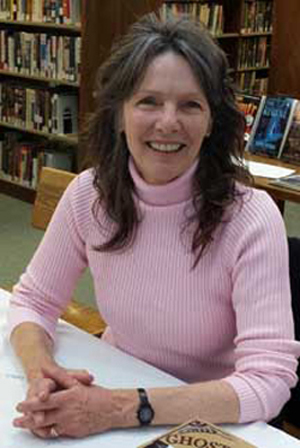
Why she wrote the book and what she hoped hope people would get out of it:
As a way to share her experience in sharing oral histories. After her mother’s unexpected death, she regretted not collecting more of her mother’s stories.
“It’s important, don’t wait. Get it done while you can” Karen Dustman
Everyone has great stories to tell. How do you help people find them?
Your family wants to the know the simple stories of how things happened, like how you met your spouse.
Involve a second person, someone who can ask you questions. Ask them what they would like to know about her life.
Why do you think stories are so healing?
You have a chance to look back and put things in perspective, which can be very freeing. As time passes the sweetness comes out. Remember, it’s not just one tragic event, but it’s a whole lifetime of events.
It can also be a way to take the monsters out of the closet. In Roy’s case, the family was able to go from sorrow and bitter grief (literally, all kept in a box!) to finding a way to celebrate and share his life. It was so good. Like they hadn’t known what to do with this sad tale, and now everyone finally could breathe a sigh of relief. They were able to come together and make the exhibit happen.

For 20 DOLLARS off, visit storyworth.com/gems when you subscribe!
What are some of the most common stumbling blocks that people face in telling their own stories?
Often it is “Where do I start telling my story?”
Find one single story you are excited about, hopefully a happy one, to get you started and make the scope a little smaller. Finish that one story and then keep on going.
There are also the practical issues: what if you don’t type well? What are the mechanical difficulties?
Karen recommends:
“It’s so important to capture those stories while we still have family who can tell them.”
Karen recommends that you “picture the words flowing freely for themselves and seeing it happening.”
In the first chapter of her book she discusses getting your mental game in gear. Realize it is possible. Rehearse it in your mind, and picture it happening and the words flowing freely. Imagine that you’re going to have a good time!
Reach out for help and encouragement. If you can share a little piece of your writing, you will get tremendous feedback from people, which can give you motivation.
“Do it now because there’s really no legacy you can leave that’s more important than that.”
Why did you create Clairitage Press?
My mom was the motivating reason. I tell her story in my Memoir book — how my one real sadness is that I never got her full story, because she died suddenly and quite unexpectedly. But then I did find 12 handwritten pages later that she had left among her papers, talking about her life, which are so precious.
Here is her story on Karen’s blog, and a photo of her as a child. Interestingly, she was about age 7 in this photo and she was born in December 1927, so this would have been taken roughly about the time that Roy Thran died!
The author of 10 local history books and many family histories, Karen says “I’m all about preserving history and honoring family.”
Visit Karen Dustman at Clairitage.com > Blog
Click here to order a copy of Karen’s book Writing a Memoir from Stuck to Finished!
The free podcast is sponsored by:
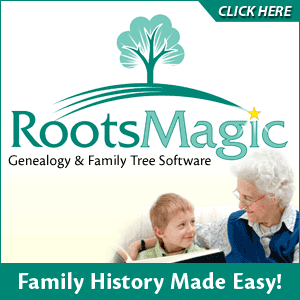
GEM: Lisa’s Recent Adventures in England
This month I keynoted at a brand new genealogy conference called THE Genealogy Show. It was held at the NEC in Birmingham, England, the same location where the Who Do You Think You Are? Live conference was held before it folded.
It was a success with hundreds of genealogists attending and Kirsty Gray and her board members including DearMYRTLE here in America are already planning the next conference for June 26 & 27 of 2020 in Birmingham
Mentioned in this Gem:
Nathan Dylan Goodwin Interviews and books
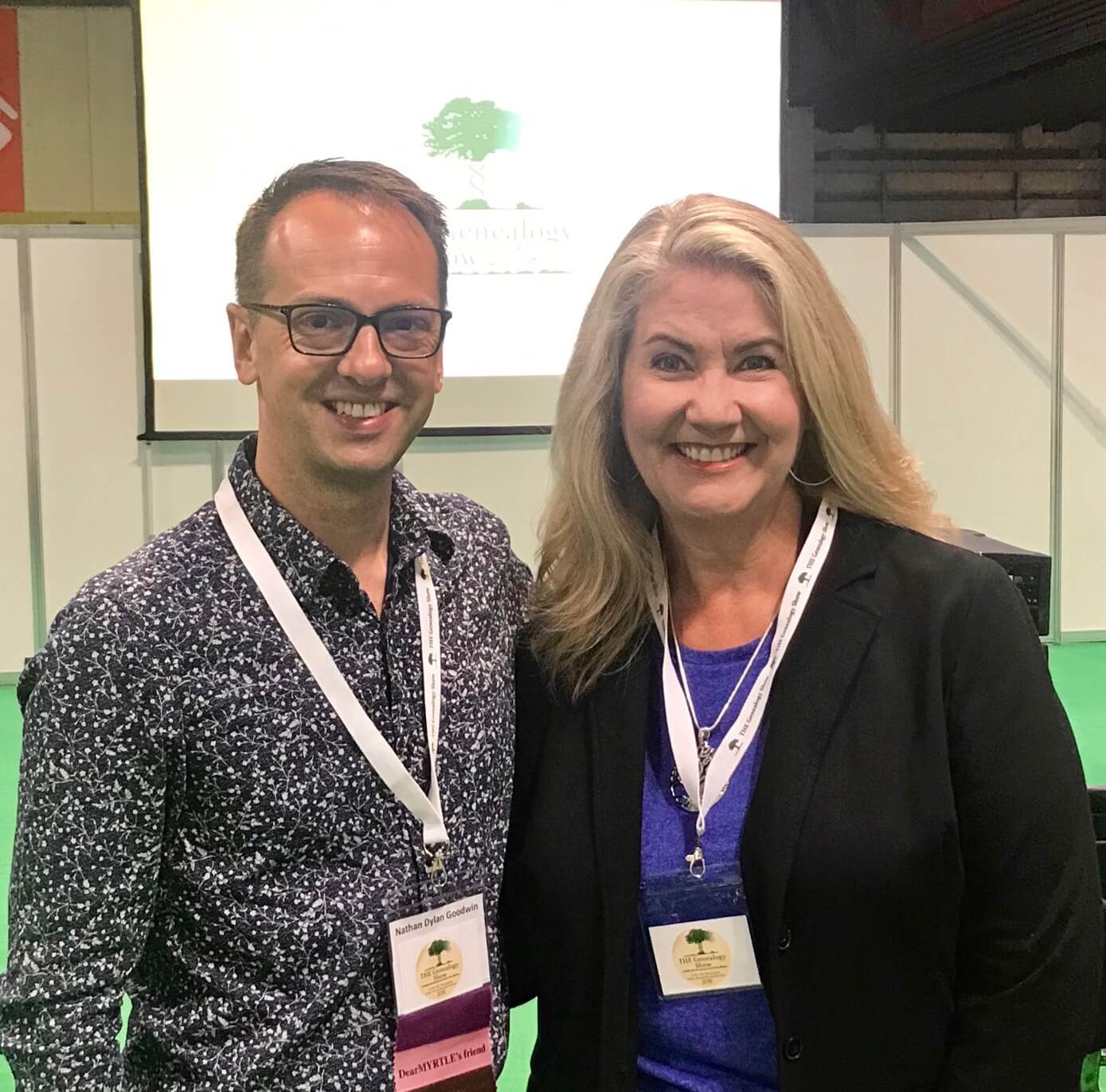
Michelle and Jennie
These two ladies were waiting for me at the entrance of my first session, Time Travel with Google Earth. (Also available on video with Premium membership.)
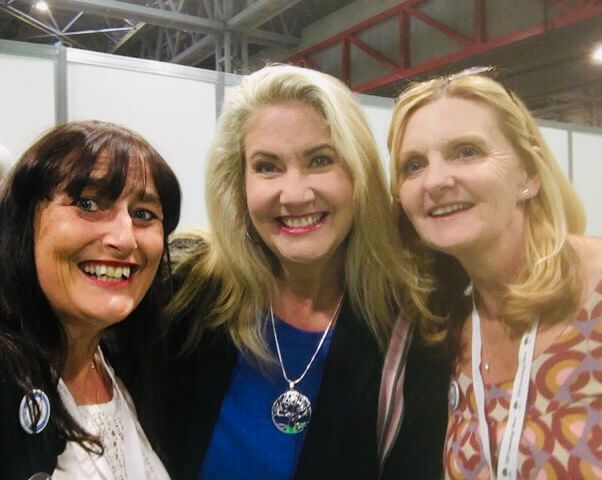
“My friend Jennie and I are addicted to your website, podcasts and all you teach. As we said [at] the show we are postgraduate Diploma Students at Strath and whenever we get stuck we say “what would Lisa do….” We are thrilled you came over to the UK and any chance we get we spread the word.”
Lorna Moloney
Owner of Merriman Research and producer and host of The Genealogy Radio show aired from Kilkee, Ireland on a weekly basis on Thursdays at 4 PM in Ireland and it’s available as a recorded podcast.
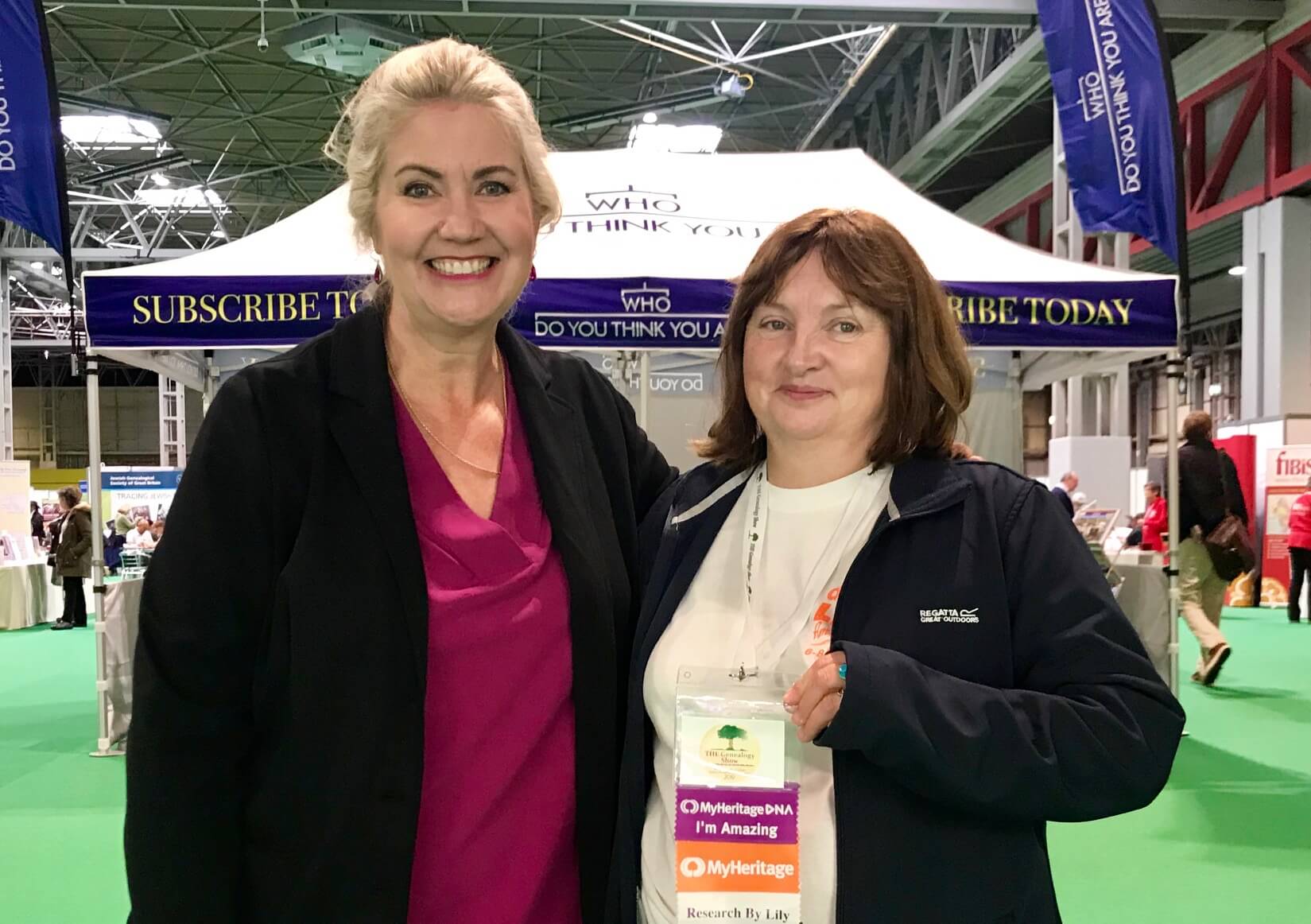
Bill and I celebrated our 35th wedding anniversary at these lovely locations in England:
- Blenheim Palace – Birthplace of Sir Winston Churchill.
- Chatsworth – Jane Austen’s inspiration for Mr. Darcy’s house in Pride and Prejudice.
- Lyme Park – Used for the exterior shots of Mr. Darcy’s home, Pemberly, in the 1995 A&E Pride and Prejudice mini-series.
- Sudbury Hall – Used for the interior shots of Pemberly.
- Haddon Hall – Wonderful example of Tudor living. The Princess Bride and Pride and Prejudice filming location.
- Kedleston Hall
- Calke House –I’ll talk more about in the next Premium Podcast episode
We stayed at Dannah Farm Country House in Shottle, Derbyshire. Say “hi” to Joanne and Martin for me!
You can see photos and videos from my trip on my Instagram page.
Become a Genealogy Gems Premium eLearning Member
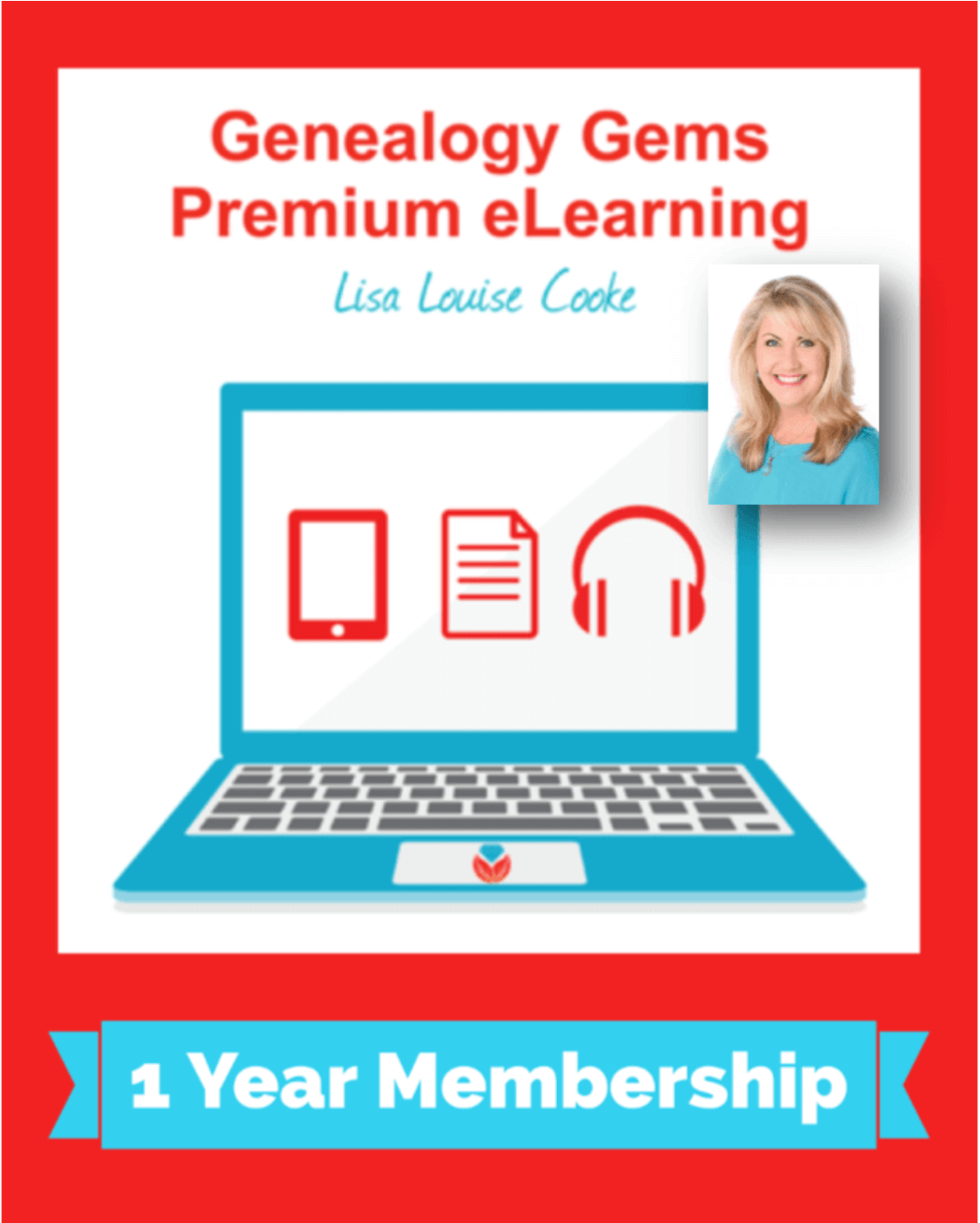
Become a Genealogy Gems Premium Member
Gain access to the complete Premium Podcast archive of over 150 episodes and more than 50 video webinars, including Lisa Louise Cooke’s newest video The Big Picture in Little Details. Learn more or subscribe today here.Download the Show Notes PDF in the Genealogy Gems Podcast app.
by Lisa Cooke | Jan 28, 2020 | 01 What's New, Records & databases |
Once again, this week’s newest genealogical records to come online don’t disappoint. As I compiled this list for you this week, I jumped with joy as I discovered records that confirm the stories of my youth.
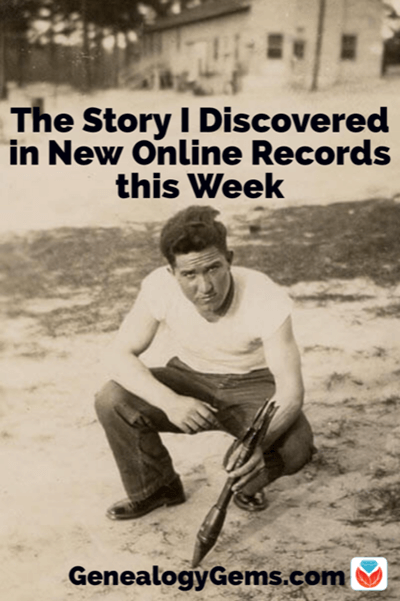
Like many families, mine is complicated. After my paternal grandparents divorced in 1956, my grandmother married her ex-husband’s brother in 1958.
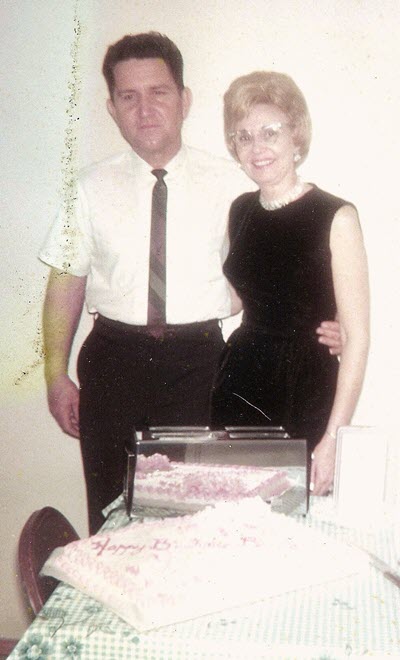
Uncle Elzie and Grandmother Pauline Moore
Elzie Moore was not only my great uncle, but my step-grandfather (if there is such a thing.) As a child all I knew was that I was lucky to have what amounted to three grandfathers, although we respectfully called him “Uncle Elzie”.
This photo very much represents how I remember him:
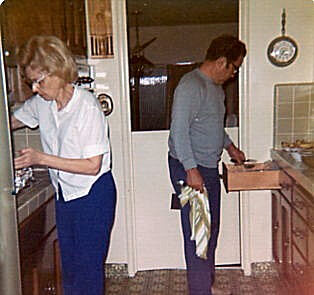
Pauline and Elzie Moore Thanksgiving 1974
He was devoted to my grandmother and ready to help whenever needed.
But well before I was born, he was ready to help his country when Pearl Harbor was attacked in 1941.
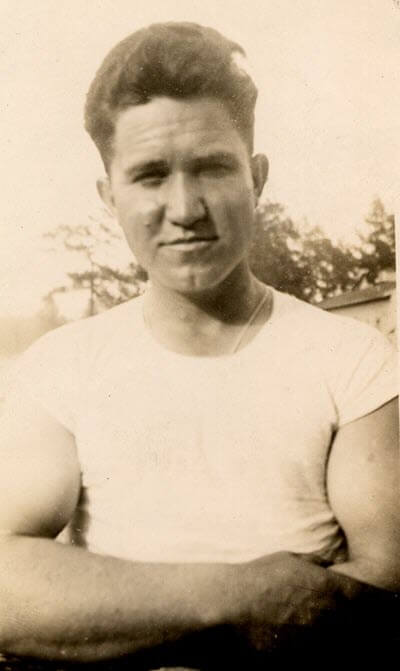
Elzie Moore in 1941.
He didn’t talk much about it, but I remember the day I was sitting on his lap examining his face. I asked him about the prominent scar on the side of his chin. He laughingly told me a variety of wild hair-brained stories as to how he got it. He then simply and quietly told me he had been shot during the war. That was that.
The story was later confirmed by my dad, who went on to explain that was just one of several wounds Uncle Elzie sustained through a heroic career.
And now, so many decades later, the details from the records themselves appear on my screen. In the WWII Hospital Admission Card Files released this month by Ancestry, I discovered not one but three different admission records.
The first was the admission record for that chin injury. He was admitted to the hospital in July of 1944 for a facial wound by a “bullet, missile” sustained in battle. He was discharged in September 1944 and sent back to the front line.
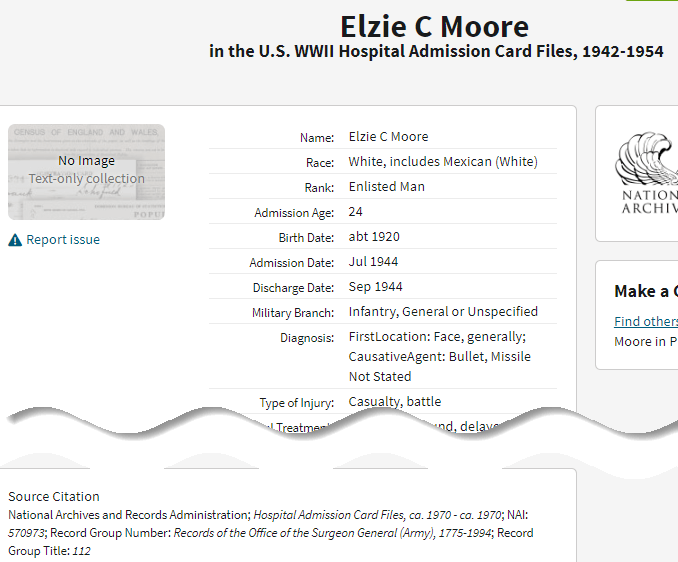
WWI Hospital Admission Records at Ancestry.com
The next record was an admission in November 1944 (although there appears to be a discrepancy in the transcription because the discharge date is listed as May 1944.) This time his injuries were shells and fragments to the thigh, buttock and hip in battle.
When working with these records it’s important to closely examine the service number listed. The third record had also matched “Elzie Moore” which you wouldn’t think was a common name. However, closer inspection revealed a different service number – he was not the same man.
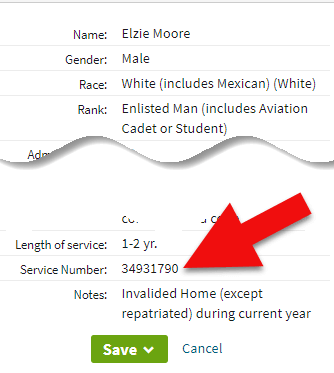
Check the service number to confirm you have the right person.
Though the man himself rarely spoke of his service, the genealogy gems I found today in the records speak volumes. I’m grateful to have more of the story behind the “Purple Heart” inscription that appears on his grave marker.
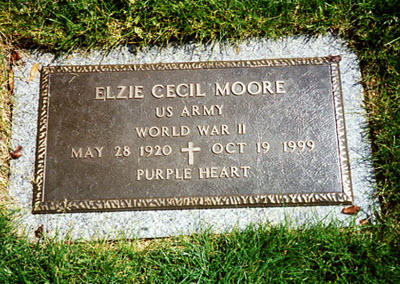
Elzie Cecil Moore grave marker
I hope this week’s list below brings you new genealogy gems!
New Records at Ancestry
Denmark
Denmark, Church Records, 1812-1918
Updated 1/15/2020
United States
U.S. WWII Hospital Admission Card Files, 1942-1954
NEW as of 1/6/2020
Washington State, U.S.
Washington, Death Index, 1940-2017
Updated 1/21/2020
New Records at FamilySearch
New Free Historical Records on FamilySearch: Week of 6 January 2020
United States
Georgia
Georgia, Chatham, Savannah, Laurel Grove Cemetery Record Keeper’s Book (colored), 1852-1942
129 Added indexed records to an existing collection
Georgia, Columbus, Linwood and Porterdale Colored Cemeteries, Interment Records, 1866-2000
114 Added indexed records to an existing collection
Hawaii
Hawaii, Board of Health, Marriage Record Indexes, 1909-1989
12,560 Added indexed records to an existing collection
Louisiana
Louisiana, New Orleans, Interment Registers, 1836-1972
868 Added indexed records to an existing collection
Louisiana, New Orleans, Slave Manifests of Coastwise Vessels, 1807-1860
115,098 New indexed records collection
Michigan
Michigan, Civil War Centennial Observance Commission, Committee on Civil War Grave Registration, Burial Records
2,957 Added indexed records to an existing collection
Mississippi
Mississippi, County Marriages, 1858-1979
2,419 Added indexed records to an existing collection
North Carolina
North Carolina, Center for Health Statistics, Vital Records Unit, County Birth Records, 1913-1922
239 Added indexed records to an existing collection
South Carolina
South Carolina, Charleston City Death Records, 1821-1926
37,437 Added indexed records to an existing collection
Tennessee
Tennessee, Shelby County, Memphis, Board of Health Death Records, 1848-1913
1,330 Added indexed records to an existing collection
Missouri
United States, Missouri, Recruitment Lists of Volunteers for the United States Colored Troops, 1863-1865
17,881 New indexed records collection
American Samoa
American Samoa, Vital Records, 1850-1972
2,237 Added indexed records to an existing collection
Australia
Australia, South Australia, Immigrants Ship Papers, 1849-1940
145,165 Added indexed records to an existing collection
Brazil
Brazil, Rio de Janeiro, Civil Registration, 1829-2012
75,768 Added indexed records to an existing collection
Brazil, Santa Catarina, Civil Registration, 1850-1999
3,314 Added indexed records to an existing collection
Canada
Nova Scotia Church Records, 1720-2001
4,881 Added indexed records to an existing collection
Chile
Chile, Catholic Church Records, 1710-1928
806 Added indexed records to an existing collection
Chile, Cemetery Records, 1821-2015
203,870 Added indexed records to an existing collection
Colombia
Colombia, Bogotá, Burial Permits, 1960-1991
6,371 Added indexed records to an existing collection
Ecuador
Ecuador, Catholic Church Records, 1565-2011
2,277,196 Added indexed records to an existing collection
England
England, Oxfordshire Parish Registers 1538-1904
43 Added indexed records to an existing collection
England, Yorkshire Marriage Bonds and Allegations, 1613-1887
1,898 Added indexed records to an existing collection
Haiti
Haiti, Port-au-Prince, Civil Registration, 1794-2012
193,434 Added indexed records to an existing collection
Ireland
Ireland, Poverty Relief Funds, 1810-1887
691,210 New indexed records collection
Italy
Italy, Trieste, Civil Registration (State Archive), 1924-1944
1,305 Added indexed records to an existing collection
Netherlands
Netherlands, Noord-Holland, Civil Registration, 1811-1950
72,937 Added indexed records to an existing collection
Peru
Peru, Áncash, Civil Registration, 1888-2005
140,119 Added indexed records to an existing collection
Peru, Ayacucho, Civil Registration, 1903-1999
3,733 Added indexed records to an existing collection
Peru, Huánuco, Civil Registration, 1889-1997
10,307 Added indexed records to an existing collection
Peru, Prelature of Yauyos-Cañete-Huarochirí, Catholic Church Records, 1665-2018
550 Added indexed records to an existing collection
Sierra Leone
Sierra Leone, Civil Births, 1802-1969
1,200 Added indexed records to an existing collection
South Africa
South Africa, Civil Marriage Records, 1840-1973
425 Added indexed records to an existing collection
South Africa, KwaZulu Natal, Vital Records, 1868-1976
4,543 Added indexed records to an existing collection
MyHeritage
Sweden
Sweden Household Examination Books, 1840-1947
Updated January 19, 2020
Total number of records in the collection: 125,672,188
“The Household Examination Books are the primary source for researching the lives of individuals and families throughout the Parishes of Sweden, from the late 1600’s until modern times. The books were created and kept by the Swedish Lutheran Church which was tasked with keeping the official records of the Swedish population until 1991.
Each book or series of books represents a 3-10 year period of time within a parish. Every year until 1894 the Parish Priest would visit each home and test each individual’s knowledge of the catechism. They would also collect information about birth dates, marriages, deaths, where people had moved to or from, etc. Each year the priest would come back and update the information of the previous year, noting changes within the population of the home. After 1894 the examinations were less focused on doctrinal knowledge and more focused on enumerating the Swedish population.”
The British Newspaper Archive
“This week we are delighted to welcome 71,598 additional pages to The Archive, as well as five brand new titles. Two of these titles, the Wakefield Express and the South Notts Echo, originate in England, while the other three, the Leinster Reporter, the Carnarvon and Denbigh Herald, and the Times of India are spread out across Ireland, Wales and India respectively.”
Start searching the British Newspaper Archive here.
New historic newspaper titles added:
Leinster Reporter
Years added: 1897-1925, 1927-1928
Caernarvon & Denbigh Herald
Years added: 1850-1872, 1874-1877, 1897
Times of India
Years added: 1861-1865, 1867-1888
Wakefield Express
Years added: 1879, 1892, 1897-1898, 1902, 1911, 1918
South Notts Echo
Years added: 1919-1923, 1927-1939
What Have You Found this Week?
Did you find some genealogy gems in any of these new records? We’d love to hear your story. Please leave a comment below.
And if you enjoyed this article we’d be grateful if you shared it on Facebook and other social media to help other family historians. You’ll find convenient sharing buttons at the top of this article. Thank you!
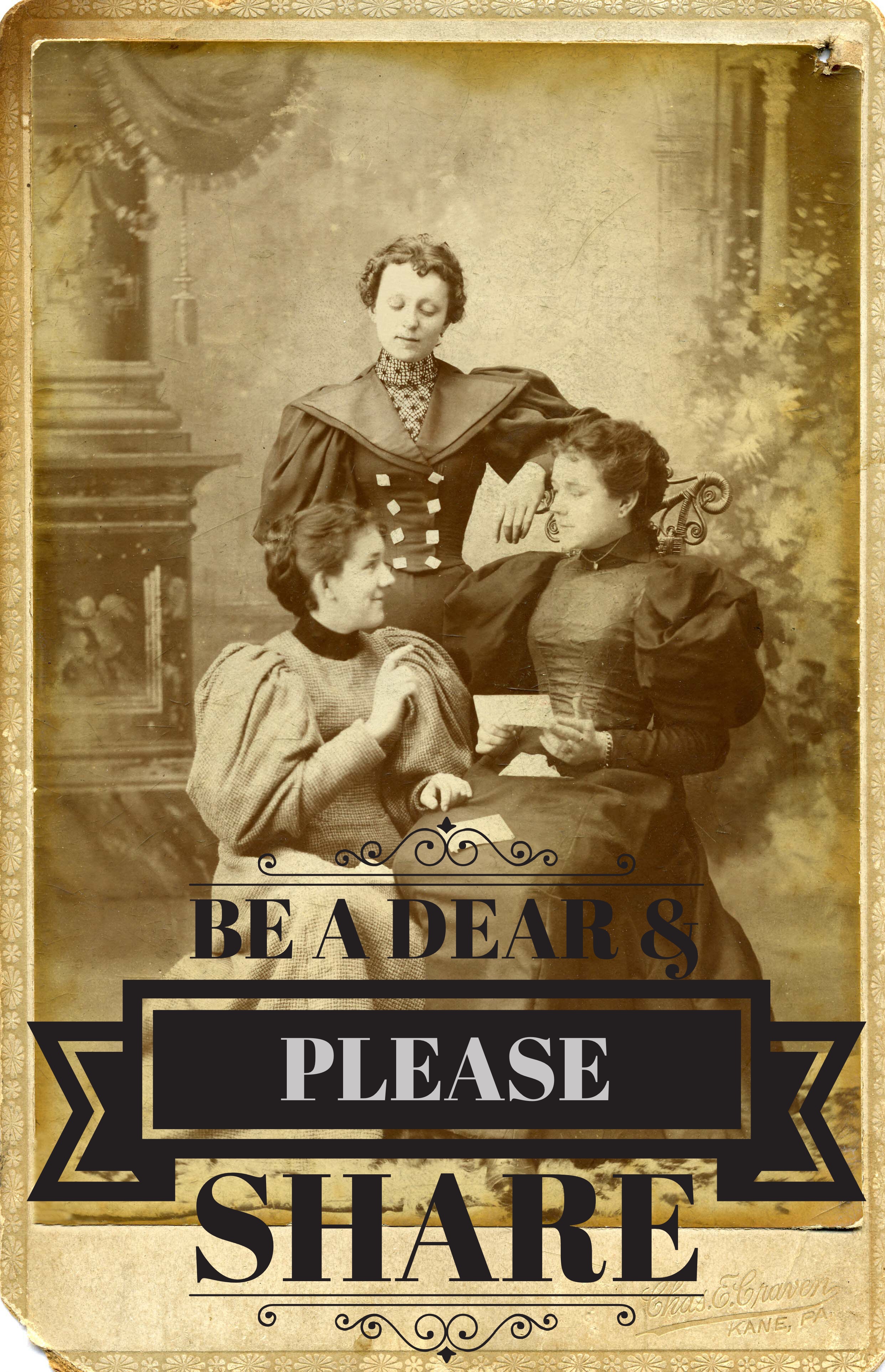
by Lisa Cooke | Sep 17, 2019 | 01 What's New, Records & databases
If there’s one thing we want to see coming online every single day, it’s new digitized genealogy records! A genealogical brick wall that has been sitting dormant for years can be broken down if just the right records becomes available. And we never know when that will happen.
This week I’m sharing some of the genealogy records that have come online in the last few weeks. These records comes from across the United States. They include wills and probate, police and mug shots, and cemetery records. Perhaps your ancestor’s record is among them.
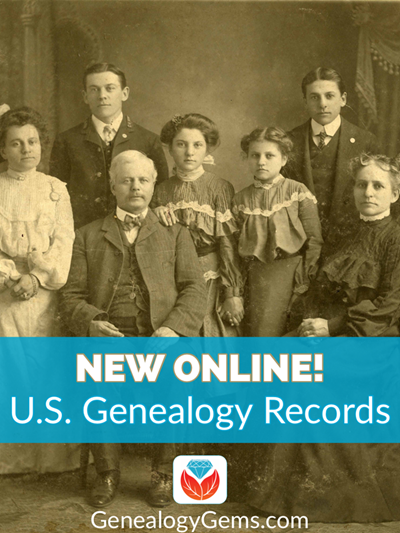
Wills and Probate Records
Do you have ancestors’ from Maryland? Search this collection of Wills and Probates at Findmypast to find out the date of their Will.
As confirmed in the introduction of the publication, the Maryland Calendar of Wills was compiled in response to an already “long existent and steadily increasing need for such work, a need not only of genealogists, nor only for Marylanders now living in the State, but also for the large class of persons, whose ancestors are to be numbered among the men and women who took part in the nation-building as begun on Maryland shores, and whose descendants are now to be found in every State of the Union.”
Each record is available in a PDF format. Use the previous and next buttons at the top of the page to browse through the publication.
The General Index of Wills of St. Mary’s County, Maryland, 1633 to 1900 was compiled by Margaret Roberts Hodges from original indices, the collection of records were published by the Carter Braxton Chapter of the Daughters of the American Revolution.
You can also Search this index to more than 107,000 probate records from Maryland between 1634 to 1777 for transcripts and images of both Prerogative Court and County records. The amount of information listed in each record will vary but looking at images is always recommended.
Preceding the implementation of the first Maryland State Constitution in 1777, two sets of probate records were maintained, probate business was conducted at the capital by the central agency which, for most of the Colonial period, was known as the Prerogative Court.
The Commissary General was the presiding officer of the court and a Deputy Commissary was then appointed for each county. The Deputy Commissary recorded each probate record that was brought into their office, periodically they would send the papers filed in their office to the Prerogative Court where they would be recorded again.
Mugs Shots and More Going Back 150 Years
Records from the Indianapolis Fire Department and the Indianapolis Metropolitan Police Department have been digitized and are available online.
Thanks to a $1.8 million grant from the Lilly Endowment, The Central Library in Indianapolis recently unveiled the collection, which includes some items dating back 150-years.
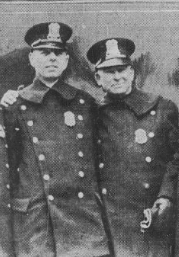
The items have been added to an existing collection of from the Indianapolis Firefighters Museum and include:
- log books,
- dispatch recordings,
- personnel records,
- newsletters,
- historical photos and
- prisoner mug shots
IMPD Deputy Chief Michael Spears said “The City of Indianapolis has a police department of which it can be extremely proud. This collection is the most complete and definitive collection of documents, photographs, videos and other exhibits ever compiled.”
“The Indianapolis Fire Department has a rich and proud 160-year history, and through our partnership with the Indianapolis Public Library, we are preserving that history for future generations,” said Tom Hanify, Professional Firefighters Union of Indiana President.
You can search this unique collection for free at http://www.digitalindy.org/ If you have family history rooted in the Indianapolis area, you’re in for a treat because the website include a wide range of historical content!
118,000+ New Cemetery Records Added
From Internment.com: Interment.net added 118,768 new cemetery records since our last report (January 2018), covering 49 cemeteries across 14 states.
Interment.net is one the oldest and largest archives of cemetery transcriptions, since 1997, and is still committed to serving genealogists at no cost.
Contained on our website are tens of millions of records, covering tens of thousands of cemeteries, from across the world.
Our records are obtained from databases direct from cemeteries, churches, libraries, and government offices, as well as from complete works of tombstone transcriptions.

Here’s the list of cemetery records published recently:
Quebec, Canada
Brome County, Saint-Cajetan Cemetery, Mansonville, 722 records
Arthabaska County, Lorne Cemetery, Kingsley Station, 63 records
Arthabaska County, Trout Brook Cemetery, Tingwick, 127 records
Temiscouata, Cabano Cemetery, Temiscouata-sur-le-Lac, 2,117 records
Ontario, Canada
Bruce County, Culross and Teeswater Cemetery, Teeswater, 2,268 records
Ireland
County Wexford, Ballyhuskard Graveyard, Ballynastraw, 120 records
Alaska
Ketchikan Gateway Borough, Bayview Cemetery, Ketchikan, 5,291 records
Arizona
Apache County, St. Johns Cemetery, St. Johns, 1,400 records
California
Monterey County, Holy Trinity Cemetery, Greenfield, 500+ records
Monterey County, Oak Park Cemetery, Greenfield, 500+ records
Napa County, Pioneer Cemetery, Calistoga, 950 records
Los Angeles County, Fairmount Cemetery, Azusa, 250 records
Michigan
Genesee County, Garden of Peace Cemetery, Swartz Creek, 56 records
Genesee County, Swartz Creek Cemetery, Swartz Creek, 261 records
Clinton County, Rose Cemetery, Bath Township, 1,442 records
Clinton County, Pleasant Hill Cemetery, Bath Township, 1,806 records
Minnesota
Carver County, Chanhassen Pioneer Cemetery, Chanhassen, 850 records
McLeod County, Oakland Cemetery, Hutchinson, 8,755 records
Anoka County, East Bethel Cemetery, East Bethel, 100 records
Anoka County, Old East Bethel Cemetery, East Bethel, 178 records
Anoka County, Oak Leaf Cemetery, East Bethel, 650 records
Missouri
New Madrid County, Evergreen Cemetery, New Madrid, 2,500 records (approx)
New Madrid County, Davis Cemetery, Kewanee, 14 records
New Madrid County, East Side Cemetery, New Madrid, 128 records
New Madrid County, Cedar Grove Cemetery, New Madrid Township, 25 records
New Madrid County, A.C. LaForge Cemetery, New Madrid Township, 4 records
New Madrid County, Augustine Cemetery, New Madrid, 2 records
New Madrid County, Byrne-Howard Cemetery, New Madrid, 32 records
St. Louis County, Eberwein Family Cemetery, Chesterfield, 9 records
St. Louis County, Harugari Cemetery, Manchester, 21 records
St. Louis County, St. Mary’s Cemetery, Hazelwood, 1,071 records
St. Louis County, St. Monica Cemetery, Creve Coeur, 801 records
St. Louis County, St. Peter Cemetery, Kirkwood, 3,589 records
St. Louis County, St. Ferdinand Cemetery, Hazelwood, 3,426 records
St. Charles County, Ste. Philippine Cimetiere, St. Charles, 369 records
Jefferson County, St. Vincent Cemetery, Fenton, 33 records
Nebraska
Scotts Bluff County, East Lawn Cemetery, Mintare, 1,900 records
New York
Allegany County, Mount Pleasant Cemetery, Houghton, 724 records
Allegany County, Caneadea Cemetery, Caneadea, 430 records
Allegany County, East Caneadea Cemetery, Caneadea, 102 records
North Carolina
Nash County, Rocky Mount Memorial Park, Rocky Mount, 4,192 records
Ohio
Montgomery County, Happy Corner Cemetery, Englewood, 600 records
Oklahoma
Comanche County, Ft. Sill National Cemetery, Elgin, 6,093 records
Pennsylvania
Elk County, Denison Family Cemetery, Jay Township, 3 records
South Carolina
Anderson County, M. J. “Dolly” Cooper Veterans Cemetery, Anderson, 2,811 records
Richland County, Fort Jackson National Cemetery, Columbia, 5,548 records
Tennessee
Lawrence County, Richardson Cemetery, Centerpoint, 55 records
Texas
Swisher County, Rose Hill Cemetery, Tulia, 6,107 records
Hays County, San Marcos City Cemetery, 6,391 records
Washington State
King County, St. Patrick’s Cemetery, Kent, 760 records
Cowlitz County, Longview Memorial Park, Longview, 17,335 records
Kittitas County, Cacciatori D’Africa Cemetery, Roslyn, 25 records
Klickitat County, Stonehenge WWI Memorial, Maryhill, 14 records
Wisconsin
Marinette County, Forest Home Cemetery, Marinette, 22,800 records
Marinette County, Calvary Cemetery, Marinette, 48 records
Marinette County, Woodlawn Cemetery, Marinette, 2,400 records
Search these records at Interment.net.
Military
The Department of Veterans Affairs and National Cemetery Administration has created a new platform that creates digital memorials for all veterans in national cemeteries.
According to the website, the Veterans Legacy Memorial is “an online memorial space for Veterans managed by the National Cemetery Administration (NCA) of the U.S. Department of Veterans Affairs (VA). NCA manages 136 national cemeteries as shrine spaces to honor our Nation’s Veterans and extends memorialization of the 3.7 million Veterans interred in NCA cemeteries to this digital memorial space, providing a VLM profile page for each.
To find the memorial profile of a Veteran, please enter the name of your Veteran in the format of First Last with no commas (“John Doe” not “Doe, John”). To search with additional information (branch of service, cemetery name, etc.), please click on Advanced Search.”
Visit and search the Veterans Legacy Memorial here.
More Genealogy Records Coming Next Week
We report on the newest genealogy records that have come online each week. Subscribe to the free Genealogy Gems newsletter here to get notification, and you’ll also received my free ebook on googling search strategies for genealogy.
 Are you going on a road trip this summer? Do you have a genealogy playlist ready? Here are some favorite resources for creating the ultimate genealogy playlist for the open road.
Are you going on a road trip this summer? Do you have a genealogy playlist ready? Here are some favorite resources for creating the ultimate genealogy playlist for the open road. 1. The Genealogy Gems Podcast App allows you to listen to our regular podcasts with tips and tricks for genealogy and includes extra bonus content you won’t find anywhere else. By downloading the podcast before you hit the road, you won’t have to worry about using your data or hoping you have enough bars! And don’t miss the Bonus content available in many of the episodes. It’s a nice perk of our app.
1. The Genealogy Gems Podcast App allows you to listen to our regular podcasts with tips and tricks for genealogy and includes extra bonus content you won’t find anywhere else. By downloading the podcast before you hit the road, you won’t have to worry about using your data or hoping you have enough bars! And don’t miss the Bonus content available in many of the episodes. It’s a nice perk of our app. by Tara Austin Weaver, author of the internationally-acclaimed blog Tea & Cookies. This memoir is one part food, one part gardening, and two parts family drama, liberally seasoned with humor and introspection. Tara’s mother moves to Seattle to be near her. Together, they purchase a home with a wild garden. The challenge of reinvigorating the garden is nothing compared to the challenge of renewing their troubled relationship. It’s an honest (and mouthwatering) story of planting, cultivating, and harvesting the fruits of family and garden. The Genealogy Gems Premium website members can access the full interview in our premium podcast episode 133 or click here to hear a free excerpt.
, by Christina Baker Kline, spent five weeks at the #1 spot on the New York Times Bestselling list and top of The Bestsellers List in Canada. The novel intertwines the stories of Vivian and Molly. Vivian is an Irish girl who lost her family in New York City and was forced to ride the ‘orphan train’ to find a new home. Decades later, the aged Vivian meets a teenager, Molly, who is struggling to find identity and happiness in the modern foster care system. Click here to catch highlights of our interview with Christina Baker Kline on the The Genealogy Gems Podcast. Genealogy Gems Premium members can click here to listen to the full-length interview.


 You may have read our previous post on
You may have read our previous post on 


































